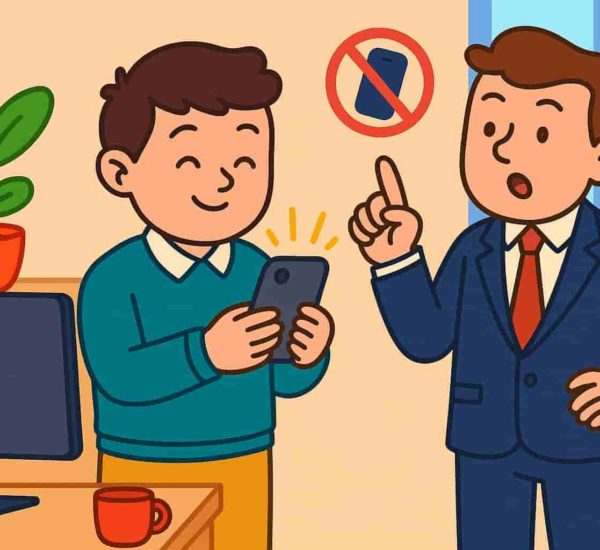Mental health is a very important topic in today’s times. More so, when the world is crumbling under the pressure of the pandemic. In these scenarios, when most of the workplaces have adopted a remote working set-up, it is important to take note of employee mental health. The remote working scenario has both pros and cons. While it has done away with the cost of logistics for both employer and employee, it has blurred the work-life boundaries as well. In these times, how do you keep track of workplace burnout?
In this blog, we will talk about employee burnout, causes of burnout, employee burnout signs, how to manage employee burnout, and more. Because to tackle something as serious as this, it is important to address each and every aspect, right from the start.
What is Workplace Burnout?
Employee burnout, also known as workplace burnout, has gained so much momentum that it has now found a place as an occupational phenomenon in the 11th revision of the World Health Organization or WHO’s ‘International Classification of Diseases.’
As per WHO, it is “a syndrome conceptualized as resulting from chronic workplace stress that has not been successfully managed.”
To put it in simple terms, employee burnout in the workplace refers to a condition, where the employee is exhausted physically and mentally to the point of a breakdown. This level of exhaustion impacts productivity and lack of help on the part of the employer further fuels it, often leading to bitter exits or other serious consequences.
The question is, how to deal with burnout at work? For starters, know what causes the problem.
What Causes Employee Burnout?
Endless competition and the hustle culture often take a toll on the employees, sometimes even inadvertently. All of these can lead to employee burnout:
- Pressure to be quick with work
- Unclear communication
- Unrealistic expectations
- Lack of managerial support
- Discrimination at work
A good work environment fuels productivity and achievement of the organization’s vision and mission. Employee burnout is what happens when an organization is not able to provide a good work environment. After knowing the leading causes, it is important to know the signs of employee burnout so that they can be pre-empted.
What are Employee Burnout Signs?

Dealing with workplace burnout is not easy. But you have to start somewhere. The first step is to recognize the signs of burnout in employees. These are also known as work burnout symptoms.
Disengagement
Do you notice your employees getting disengaged from tasks? Disengagement often happens when a person has lost interest in the work, which may be a result of burnout.
Visible Exhaustion
An employee’s depleting energy and disinterest are often visible in their appearance. This also leads to a sharp change in personality. Burnt-out employees are more prone to rapid mood swings, constant irritation, and an overall negative professional perception about work, the workplace, and teammates.
A constant state of stress can also lead to them not being too attentive as far as the employee dress code is concerned.
Reduced Quality of Work
A burned-out employee who has lost interest in work will never be able to deliver the same quality of work that an enthusiastic employee would. Does that make the person a bad employee? No. But this is surely a sign that the employee needs help and is not in the best mental space to take up any more work or assignments.
Overly Cynical Attitude
Burnt-out employees bicker a lot; about their job, key performance indicators, job responsibilities, and the workplace as a whole. Anything and everything can tick them off as they dangle between cynicism and pessimism.
Demoralization
Once the employees are done with their cynicism, the next stage of burnout is worse. It is a state of ultimate defeat and demoralization wherein the employee does not think they are fit to do any task in the right way. They are demoralized and unmotivated. As a result, they only half-heartedly attempt tasks, because they have already assumed they would be bad at it.
Chronic Absenteeism
Someone suffering from employee burnout will often take more sick leaves as compared to the others. This may either be the case because they are actually sick, or because their mental afflictions are being manifested physically.
Absenteeism should be tracked consistently by HR to find out if there are certain employees who may be taking too many leaves. HR can then check in on these individuals to find out what is their concern. If it is a health issue, they can offer additional paid leave, FMLA, or even short-term disability.
If it is a burnout symptom, they can be given help before it is too late.
Multiple Unfinished Tasks
The number of unfinished and incomplete tasks going up and being carried forward indefinitely? This is a sign that the employee might be too burnt out to create something new and more often than not unable to finish the task despite dedicating the requisite time to it.
Increased Employee Attrition
Employee burnout, due to a poor work environment can lead to a higher rate of employee attrition, something that can become a pain point for the organization. It will not only increase hiring and training costs but also reflects poorly on the organization in the market.
A Negative Work Culture
All of the above-mentioned factors, when combined together, perpetuate an extremely negative work culture.
If one notices these signs, there is a pattern. Most of these signs reflect negativity and dissatisfaction, either with the attitude of managers or with the workplace in general. The solution lies with these two as well.
What is the best way to make your employee feel motivated and energized?
How to Manage Employee Burnout in the Workplace?
Employee burnout signs and causes can help you identify the problem. But you also need to know the solutions. This is an extremely crucial situation that not only affects the professional aspect but the personal one as well, for the employee. For the organization, it not only leads to higher costs and a bad image but also a constant state of negativity that leads to the exit of the present employees and the difficulty in finding new ones.
So, how to manage employee burnout so that none of this happens? Let’s take a look.
#1 Combating Employee Burnout: Set Realistic Expectations
How can you do that? By setting realistic Key Performance Indicators and then having a one on one discussion with the employee about it.
One-on-one meetings have a personal touch of care that helps the employee open up and tell you about their strengths and weaknesses. They can also be vocal about what they can realistically do and what they cannot. Alternatively, you can provide them the relevant assistance if they need it, to help them achieve their goals better.
#2 Combating Employee Burnout: Provide Relevant Training
Candidates are hired as employees for a specific job but, as the organization grows, so does the role. In such a scenario, as the expectations grow, the employee may need help. The managers and HR should keep a tab on such expansion. Ensure that there is a buffer period, both during the training period and after the training period when the effects are to be observed. The best way to do it is by implementing an Employee Assistance Program.
#3 Combating Employee Burnout: Strike a Balance Between Work and Life
New hires are mostly enthusiastic about the job. The manager has to ensure that the work and management remain interesting enough for the employee to be engaged throughout their time with the company. At the same time, they need to encourage the employee to take enough breaks, to avoid the possibility of burnout. Remember that burnout never serves anyone. It may provide double the work on a single day, but might end up affecting the productivity of the rest of the week.
#4 Combating Employee Burnout: Take Mental Health Seriously
Mental health is not a fad. It is as real as any other physical illness and should be taken seriously. If ignored, it can snowball into something really big and spin out of control.
Your employees are people. They need their minds healthy as well. Ensure that you have Employee Wellness Programs keyed in at relevant times. If possible, also have contacts and connections with therapists who can come in to improve the overall mental well-being of your employees.
#5 Combating Workplace Burnout: Offer Rewards for Taking a Break
A little unusual, but quite effective. Organizations often reward employees who go overboard with work, even if the quality suffers.
Do the opposite. Encourage and reward your employees for taking a step back by accepting when they have reached their limit. Reward them for taking a break and passing on the baton at the right time, rather than waiting for burnout and breakdown.
Promote taking sabbaticals and involve zero contract employees when an employee goes on a break for a few months. This may be an unconventional route to follow, but when your main goal is organizational well-being and ensuring the employees perform in the best possible manner, this technique works well.
#6 Combating Workplace Burnout: Keep Tabs on Work Culture
People grow up when seldom grow out of their attitudes, especially if these traits are deeply rooted. Keep an eye out for the work culture. Keep a close eye on the workforce and be proactive when it comes to spotting any form of bullying or harassment, even if it is going on silently and may be swept under the rug.
The best way to tackle this would be to be an Agile HR and be proactive, so that such issues are solved on priority, for better and healthier work culture. This will help negate employee burnout.
#7 Combating Employee Burnout: Discourage Knee-jerk Managerial Reactions
Have training in place for upcoming and current managers as well. Train them on how they can manage their employees in a better and less stressful manner. The feedbacks and reactions should not be knee-jerk, as they contribute to stress, again, causing employee burnout-like situations. The work done when the employee is so stressed out seldom comes out to be good.
#8 Combating Employee Burnout: Keep all the Channels of Communication Open
Communication is key. It can resolve differences and solve many issues, even employee burnout. Each person has a different way of communicating. Similarly, every person has a different mode of communication with which they are comfortable.
As HR, have all the possible channels open for the employees. Encourage team managers to do the same. This will help keep the conversations transparent and the employees will not keep things to themselves, further contributing to employee stress and burnout.
#9 Combating Employee Burnout: Consider Shift Scheduling
Another brilliant way to combat job burnout is by considering a shift schedule. This type of work schedule means that employees work limited hours and have more time to balance out work and life. It also prevents their mind from tiring down, thus gearing them up for the next day. It increases their productivity and reduces stress and burnout considerably.
#10 Combating Employee Burnout: Respect Time Off the Job
Understand that the person you are dealing with is not just your employee, but also an individual with aspirations that go beyond the workspace. Be understanding of their issues and provide them the relevant space when they require it.
Be mindful of their off-job obligations, be it another job or freelance assignment that they may have undertaken to have a better financial portfolio, or even therapy to help them combat their mental health.
Do You Need to Tackle Employee Burnout?
It is extremely important to be aware of your human resources. Keep an eye out for when their mental health is crumbling. The signs are plain and visible. The only thing required is a watchful way to know that they are truly burning out. Most of the time the employees do not recognize this. That’s why it is important for the organization, managers, and HR department as a whole to constantly enforce practices that encourage a healthy work environment and discourage employee burnout.
What do you do at your workplace to tackle this issue?






